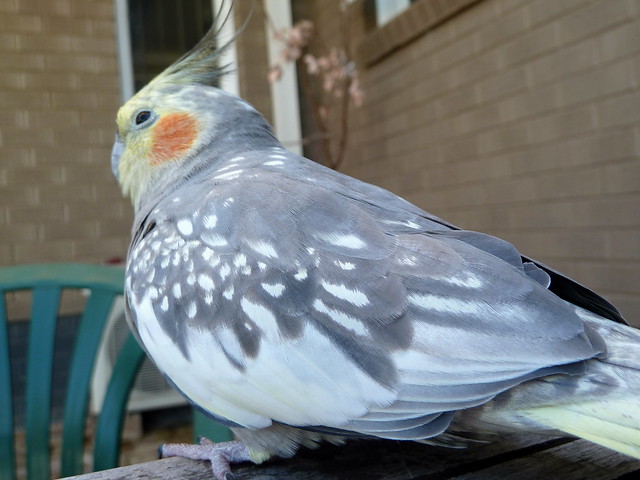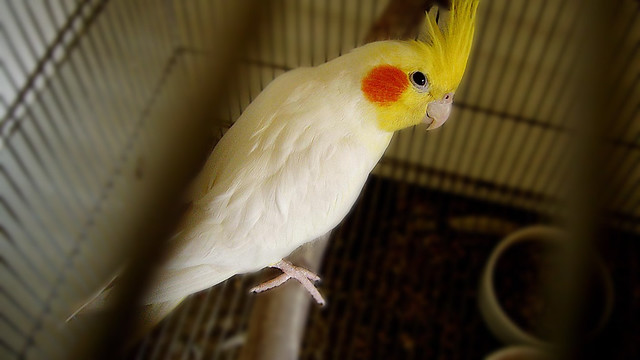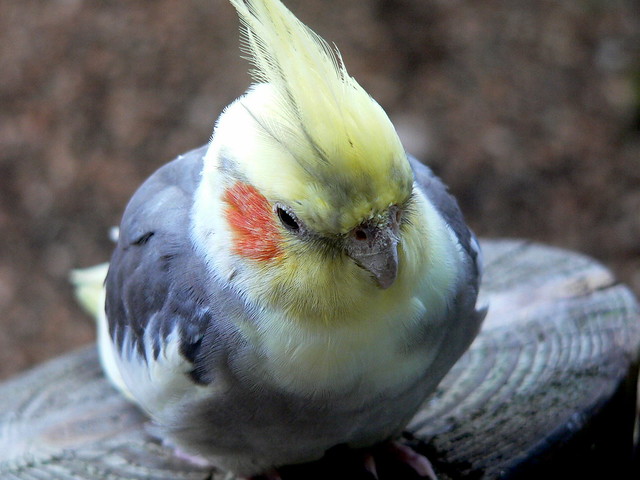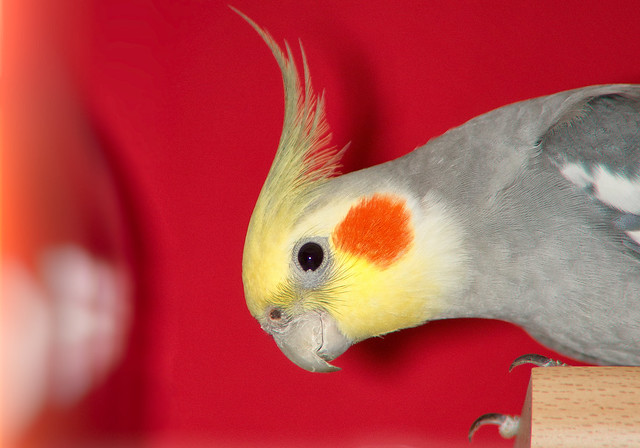
|
|
Pearl Cockatiel - Photo:
Wikimedia |
Various cockatiel mutations have been achieved through the years by very careful selective breeding. Most bird owners now think that the normal grey cockatiel is pretty boring. There are trade-offs, however. The more the mutation from the normal grey, the less intelligent and ditzy the bird seems to get. Our three cockatiels who are mutations are much more flighty, more easily scared, and have more night frights than our two normal greys.
Pearl cockatiel varieties include the lutino pearl cockatiel which has the yellow lutino coloration with the pearl feather pattern. Lutino pearls retain the orange cheek patch. The cinnamon pearled cockatiel has the cinnamon mutation with the pearl feather pattern which results in a very pretty bird.
The pied pearl cockatiel as well as the pied coloration with a pearl feather pattern. The pastel pearl cockatiel, which we have, does not have the orange cheek patch.
An important thing to know if you are looking to purchase a pearl cockatiel is that only the female pearl will retain the full pearl feather pattern for life after the first molt or later in the second year. Male pearls plumage will usually fade to the point of looking like a normal grey. On rare occasions will it stay. His coloring will be somewhat like the normal grey, but his wing feathers will have two shades of grey coloring, which has an attractive pattern. The orange and yellow areas will be less intense than the normal grey.
In the hen pearls, the general body color is similar to that of the male with the ear patches not being so intense. The wing bars are less pure in color.
There is no white on the crown and the yellow areas are even fainter. The
thighs have barred yellow and the underside of the tail is striped and dappled
with gray and yellow.
So if you want a pearl cockatiel, the best bet is to purchase an older pearl cockatiel who has molted or is around two years old to assure that you will keep the pearl color. Or you can play the odds. We got lucky and bought our female pearl as a newly weaned baby. To our delight, she turned out to be female and is very beautiful. She gets lots of compliments from our friends. The pearly cockatiels are very lovely birds and are a great addition to any
aviary
.
|











